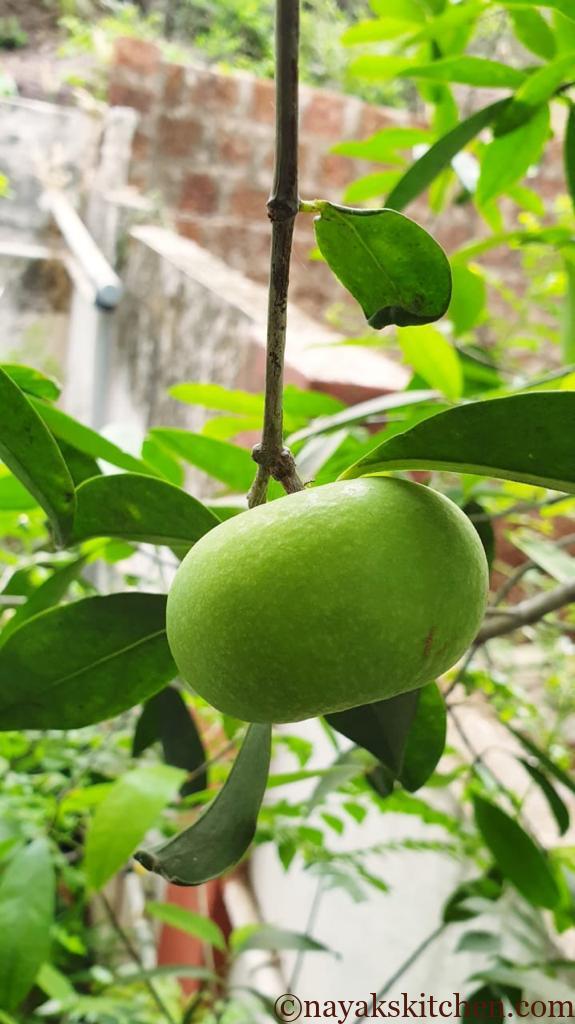All about the Kokum fruit, its benefits and its versatile uses.
Summers is all about mangoes. The markets start beaming with different varieties of them. But do you know, there is one little fruit that makes a small guest appearance too? It’s the cute fruit “Kokum” and probably you are not much aware of its benefits other than its culinary uses. Every household along the coastal belt will have a stock of this fruit in its dried form. However, you must taste this fruit in its fresh avatar.
If you live along the coastal area, Kokum will not be something new. When I say Kokum, what probably comes to your mind are mundane-looking black peels which colour your hands pink, upon touch.

But have you ever seen a Kokum fruit? It looks really beautiful and alluring. Besides the looks, the Kokum fruit has some fascinating characteristics and benefits that will surprise you.
Popularly also known as the grandma’s remedy for acidity, Kokum is probably one of the most underrated native fruits. It has now been included in the NUS (Neglected and Underutilized Species) of the United Nations Food and Agriculture Organization (UNFAO).
A natural antacid, did you know Kokum has many uses including therapeutic applications? It is now thus slowly finding a global market with its variety of applications. So, read on to know more about this indigenous fruit of the coast.
What is Kokum?
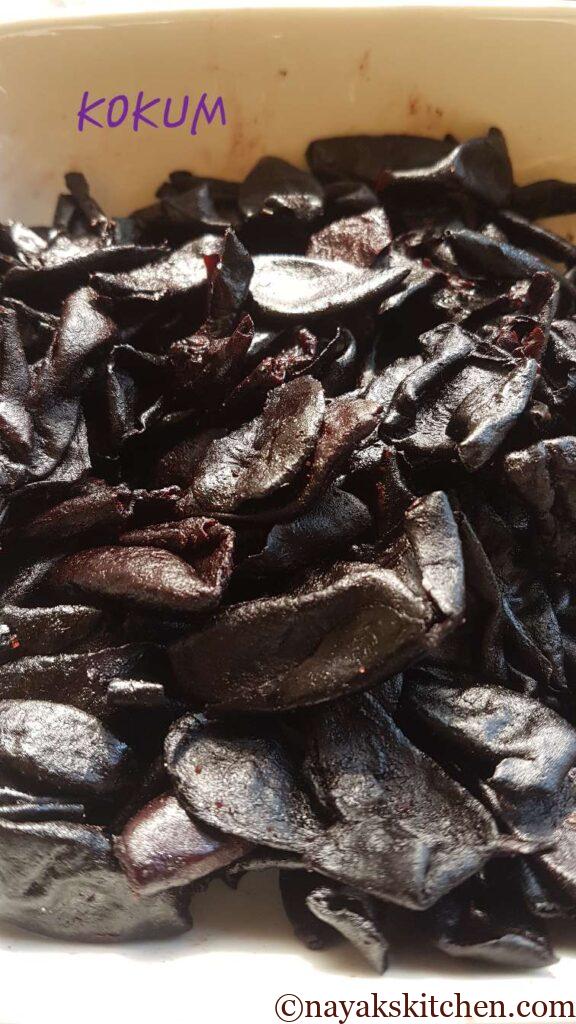
Kokum (scientific name Garcinia Indica) is a plant of the mangosteen family. The Kokum contains an active ingredient called ‘Garcinol’ from which it derives its scientific name. Garcinia Indica, commonly known as kokum or amsul, has a wide variety of culinary, industrial, cosmetic and pharmaceutical uses.
Kokum is cultivated along the Western Ghats and some regions of northeast India. It is also found in the Andaman and Nicobar Islands and Orissa to a lesser extent. However, it is undoubtedly the culinary jewel of coastal cuisine. Kokum is an essential ingredient in the cuisines of Assam and Gujarat too.
It acts as a souring agent and hence renders a distinct flavour to delicacies. Most of the Goan fish curries use Kokum.
Characteristics of Kokum fruit
Kokum imparts a deep-red to pink colour to the food you add. Hold a handful of kokum in your hand and see for yourself!

Besides providing a natural colour, it adds tartness to the food. Kokum is thus primarily used as a souring agent in Goan and many other cuisines.
It is one of the necessary ingredients in fish curries (especially mackerel, sardines etc.). The famous Sol Kadhi, made of Kokum, is served after a heavy, spicy meal in Goan and Maharashtrian cuisine.
Do check out the Solkadhi recipe below.
The Kokum Tree

The Kokum tree is a tropical, fruit-bearing evergreen tree. It is also known as Kokum butter tree, Goa butter tree or mangosteen oil tree. The tree grows as high as 18 metres. It is cultivated in the tropical forests of the Western Ghats of Konkan, Goa, Kerala and South Karnataka.
The Kokum tree grows well in a hot and humid climate. It is abundantly available during summers. Ripe fruits are harvested in April and May, sun-dried and used throughout the year. The harvest season and shelf life of the raw fruit are very short. Hence, it is prone to getting spoilt easily.
Did you know 'The Kurade Farm' in Ambaulim Quepem, South Goa is home to Asia's largest Kokum plantation? It is owned by Shrihari Subrai Naik Kurade, a senior and experienced farmer. The plantation is spread over seven hectares of land and has about 2400 kokum trees.
The Kokum Fruit
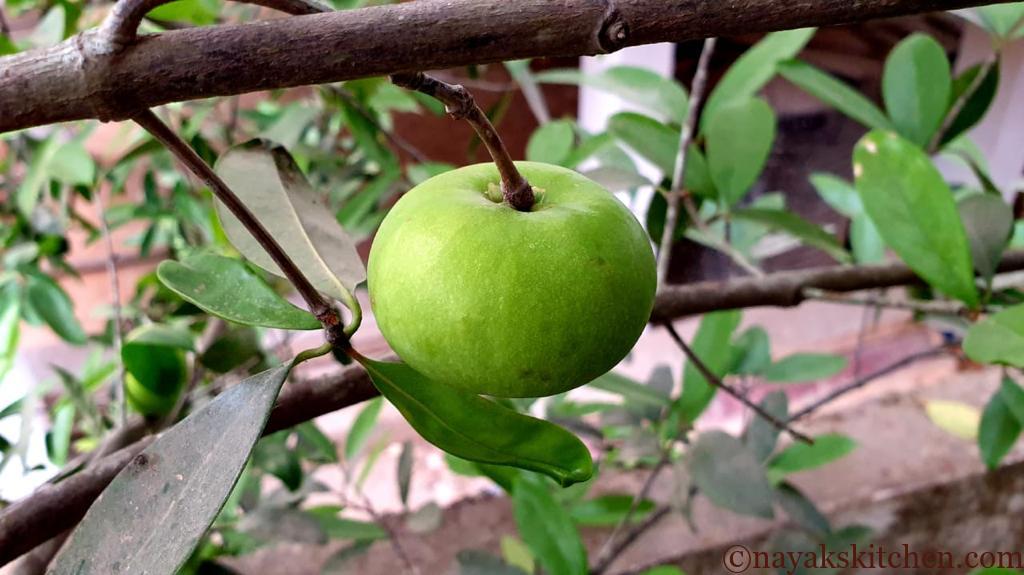
The Kokum is a small fruit (similar to a cherry tomato) that is initially green in colour. It turns red when ripe and becomes deep red upon further ripening. Every part of the fruit has culinary, medicinal or industrial use.
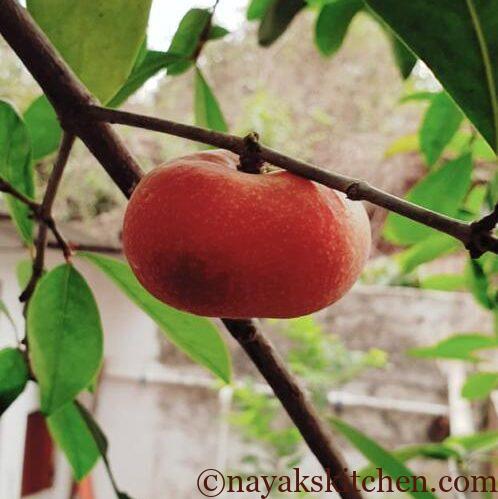
The ripe fruit is halved and the seeds and fleshy part inside it are removed. The outer rind of the fruit is then sun-dried for culinary uses. It turns black or dark purple. This sun-dried fruit is called Kokum or amsul. These sun-dried rinds are stored and used throughout the year for cooking purposes.
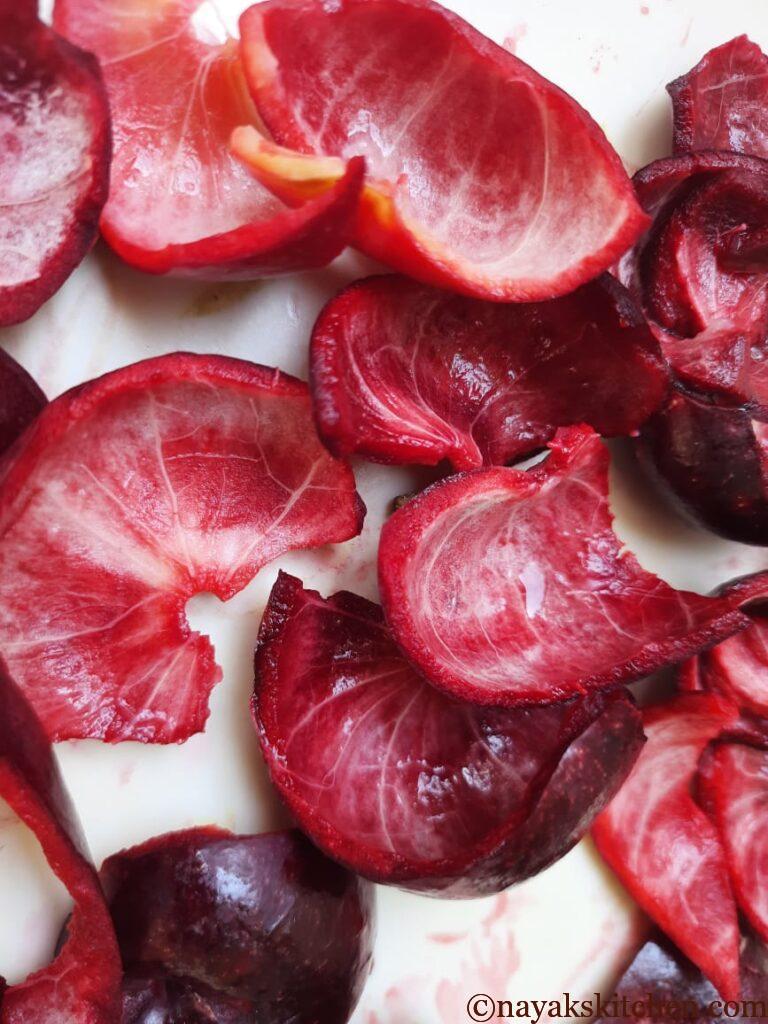
The oil derived from the seeds i.e. Kokum butter is used in cosmetic applications and products.
Since the shelf life of the Kokum fruit is short (just about 5 days in suitable temperature) the collection and transportation of Kokum generates logistical problems causing wastage.
The taste of Kokum
The taste and flavour of Kokum are distinct from any other souring agents. It is sour but also has a hint of sweetness. This provides a unique flavour and aroma to different recipes.
Uses of Kokum fruit
Kokum is used as a souring agent in both veg and non-veg delicacies. Besides this, it also prevents the sabzis (eg; ladies finger/bhindi) from becoming sticky and slimy. Also when you cook tubers like suran, arbi etc. it tackles the itchiness of these veggies. Without Kokum, these tubers would irritate your throat.
Although Kokum was mostly used for household culinary purposes, it is now being commercially exploited for its benefits. Many processed products are made from the fruit – Kokum agal, sherbet (juice), Kokum butter, rind powder, honey etc. It is also used as a natural colouring agent for food preservation.
Benefits of Kokum
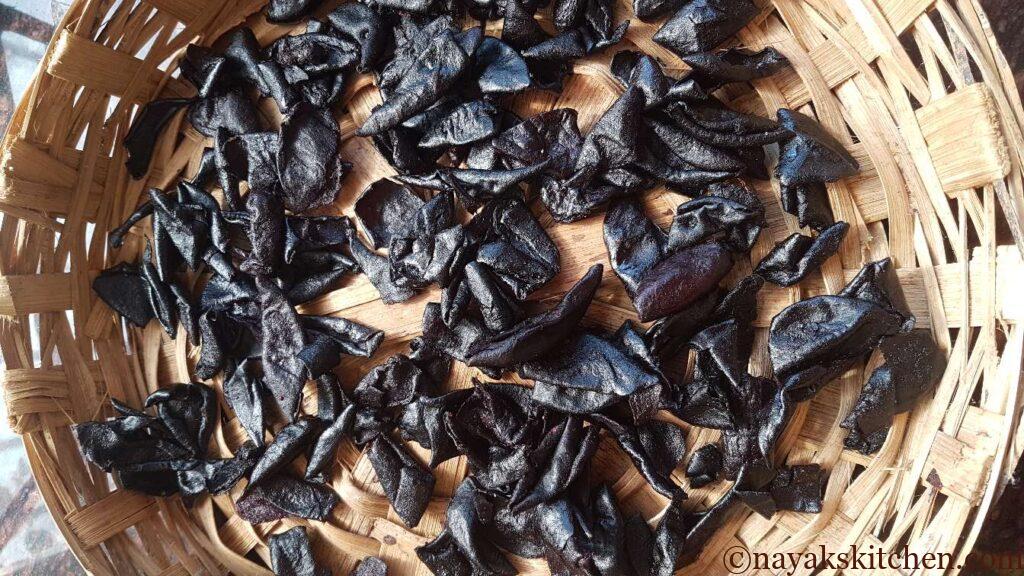
Not many of us may be aware of the innumerable health benefits of the modest Kokum. It is the source of many vitamins and minerals like vitamin A, vitamin B3, vitamin C, iron, manganese, potassium to name a few. It is rich in fibre, but low on calories.
- Digestion – Kokum relieves indigestion, constipation and flatulence. Due to its anti-flatulent properties, it is added to many fish curries. Also, it aids digestion if you are a vegetarian and consume lentils, beans regularly.
- Acidity – Due to its cooling properties Kokum is a great remedy for acidity. Fresh Kokum sherbet during summers helps beat the heat and prevents dehydration.
- Builds Immunity – Kokum has anti-viral and anti-bacterial properties. It helps prevent infections. Great to boost your immunity.
- Antioxidants – Kokum is rich in antioxidants that bind with free radicals and prevent oxidative damage to body cells.
- Weight Loss – Kokum prevents the conversion of carbohydrates to fats. It contains a compound called HCA (Hydroxy Citric Acid) that helps burn excess fat through oxidation. Also, the fibre content keeps you feeling full for longer. Kokum, thus, improves satiety after meals. You may have observed most of the cultures finish off their meals with a Kokum drink (eg; sol kadhi in Goan cuisine).
- Skin – Kokum is now widely used commercially in many skincare products as Kokum butter. It prevents skin and tissue damage by repairing and healing the cells. Thus, it is a great anti-ageing product. Kokum butter is an effective natural remedy for cracked heals.
- Gut Health – Kokum protects the diverse gut flora and thus benefits gut health.
- Improves Mood – Feeling low or stressed? Make a Kokum drink for yourself. Kokum increases the serotonin levels in the body. Serotonin is the hormone that stabilizes your moods, controls anxiety and gives you a feeling of well-being.
Kokum Aagal (Garcinia Indica extract) and Juice – What’s the difference?
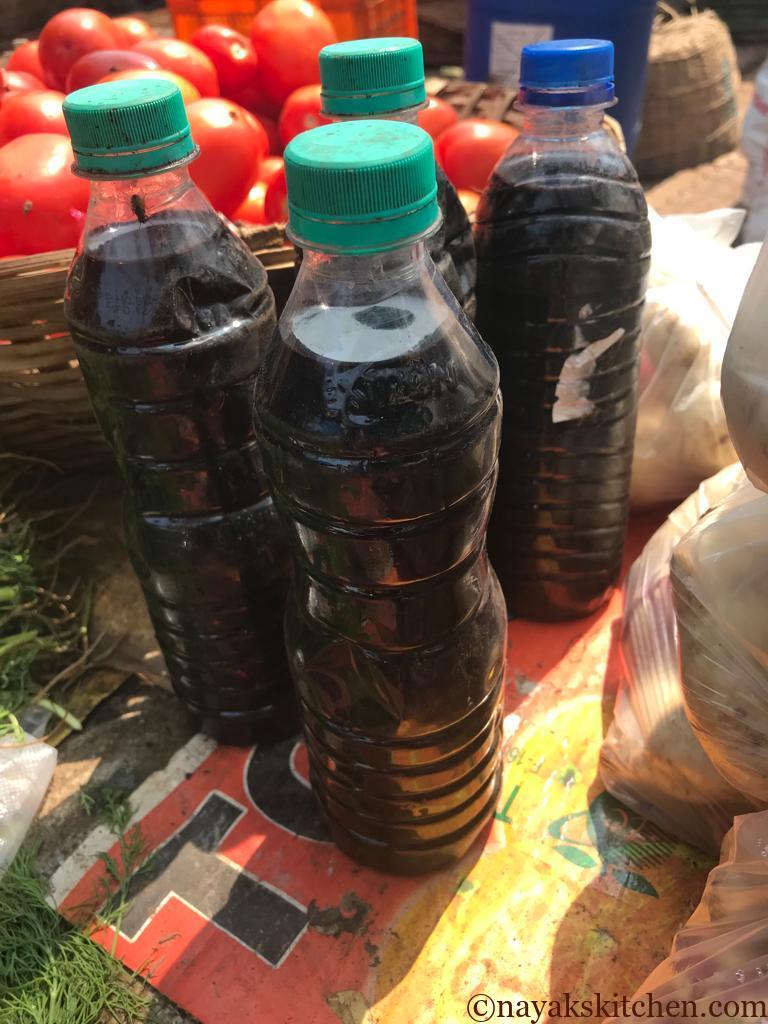
If you visit the local markets of Goa or Konkan regions you will find Kokum agal (Garcinia Indica extract) and Kokum sherbets (juice) for sale. They both are different and confused at times. The fresh juice obtained from the fruit is concentrated with salt to make Kokum Agal. Agal is a concentrate whereas its juice is a diluted form.
Kokum juice is an excellent summer drink. It can be made from fresh fruit or sun-dried rinds too. It keeps your body cool and acidity at bay. Soft drinks leave you dehydrated. On the contrary, Kokum sherbet hydrates and refreshes.
Kokum Butter and its benefits
Kokum butter is an oil derived from the seeds of the fruit. Hence, it is a plant-derived butter. It has a saturated fat known as ‘stearic acid’. The chemical structure of this fat allows it to remain solid at room temperature. Therefore it is referred to as butter instead of kokum oil.

Kokum butter is non-greasy, lightweight and has no smell unlike other kinds of butter like cocoa, shea etc. It is used as a component in culinary, cosmetic and medical applications. Although it has a hard texture it gets absorbed easily when applied to the skin.
Kokum butter is a wonderful natural product that acts as a moisturizer to dry skin, scalp and hair. It is used to make lotions, soaps and balms. It is also available in the local markets in the form of small pellets or blocks.
Since it is edible and has a higher melting point (around 40 degrees C) than cocoa butter it is being widely used to make chocolates.
Is Kokum better than tamarind?
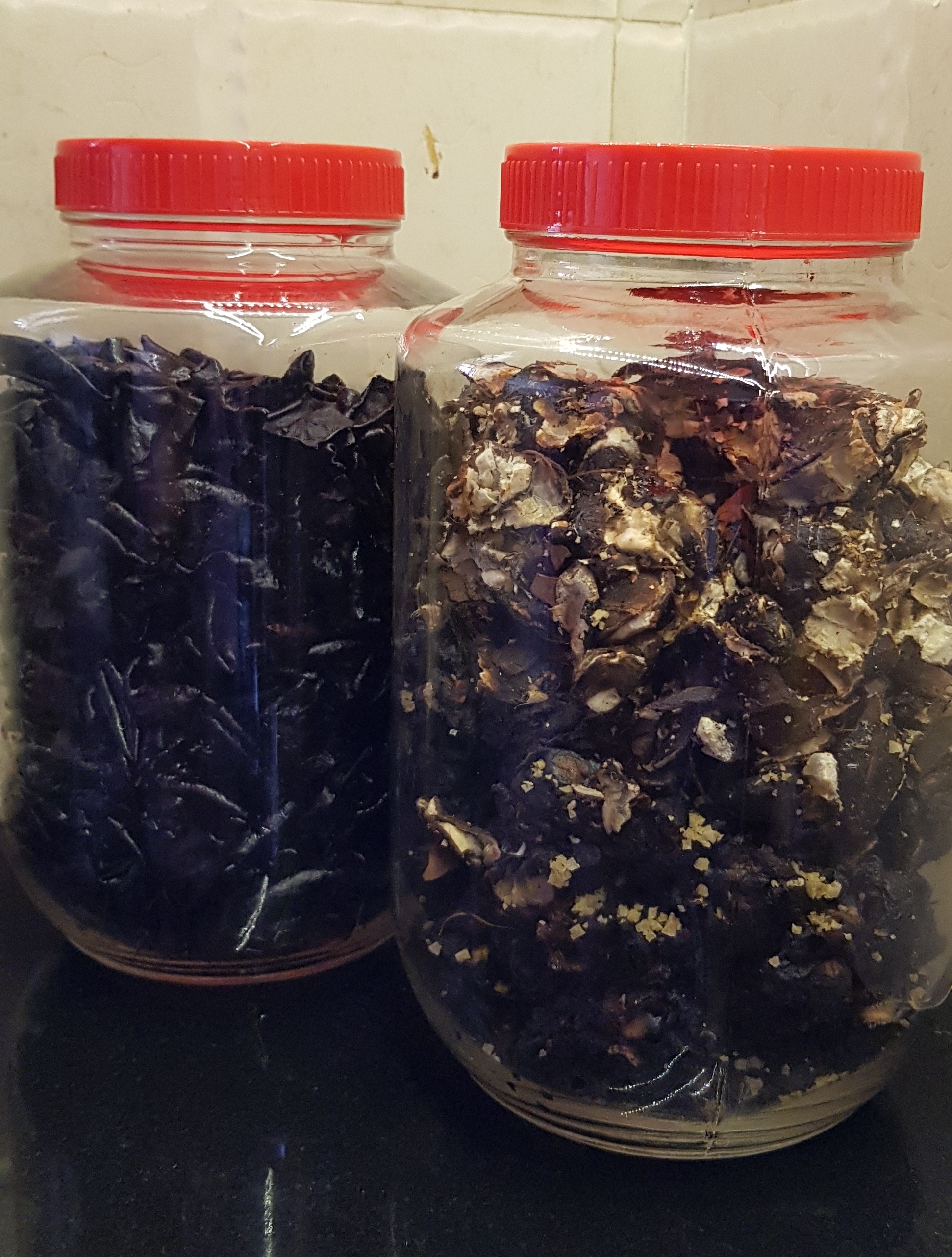
Well, it’s like comparing oranges to sweet limes. The question is not which is better rather what is the right souring agent for the given recipe. They can act as substitutes for each other. However, certain traditional recipes will taste authentic, only with the use of the apt souring agent. So use accordingly.
Kokum is favoured in Goa as tamarind in Tamilnadu (in fact whole of South India) and amchur in North India. The beauty of kokum is that while other souring agents run a risk of getting dominant in a dish, the Kokum does not. It will quietly work in the background not disturbing the original taste and flavour, only enhancing it.
Although Kokum has been neglected and is an underrated food it is now emerging as the new superfood, both locally and globally. The beautiful and versatile kokum should rightfully find its place amongst other exotic foods with increasing awareness.
